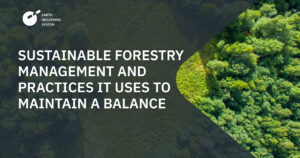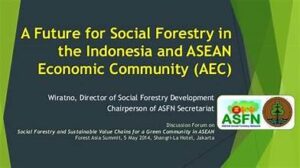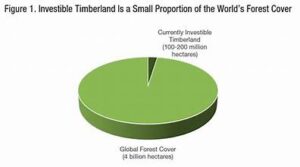
Forestry management and conservation have become crucial elements in addressing global environmental challenges. As climate change accelerates and biodiversity loss threatens ecosystems, international forestry agreements play a pivotal role in shaping global policies and strategies. This article explores the future of these agreements, emerging trends, and the evolving global policies that are likely to influence the international forestry landscape.
1. Current State of International Forestry Agreements
International forestry agreements, such as the United Nations Framework Convention on Climate Change (UNFCCC) and the Convention on Biological Diversity (CBD), have historically focused on conserving forest resources and addressing deforestation. These agreements aim to foster collaboration among nations, promote sustainable forestry practices, and mitigate climate change impacts.
Key Examples:
- REDD+ (Reducing Emissions from Deforestation and Forest Degradation): A mechanism under the UNFCCC designed to provide financial incentives for developing countries to reduce emissions from deforestation and forest degradation.
- Forest Stewardship Council (FSC): An international non-governmental organization that promotes responsible forest management through certification and labeling of forest products.
2. Emerging Trends in Forestry Agreements
2.1. Integration of Climate and Biodiversity Goals
One significant trend is the increasing integration of climate and biodiversity goals within forestry agreements. Forests are critical for carbon sequestration, and their preservation is essential for maintaining biodiversity. Future agreements are likely to emphasize holistic approaches that address both climate and ecological health.
2.2. Strengthening Indigenous Rights and Participation
There is a growing recognition of the rights and knowledge of Indigenous peoples in forest management. Agreements are increasingly incorporating Indigenous perspectives and ensuring their participation in decision-making processes. This trend is driven by the understanding that Indigenous communities play a vital role in sustainable forest management and conservation.
2.3. Enhanced Use of Technology
Technological advancements are transforming forestry management. Emerging technologies, such as satellite monitoring, drones, and artificial intelligence, are being utilized to enhance forest monitoring, data collection, and management practices. These technologies are expected to play a crucial role in future forestry agreements by providing real-time data and improving transparency.
2.4. Focus on Restoration and Reforestation
There is a growing emphasis on forest restoration and reforestation in international agreements. Initiatives like the Bonn Challenge aim to restore 350 million hectares of degraded and deforested lands by 2030. Future agreements are likely to continue focusing on these efforts as a way to combat climate change and restore ecosystem services.
3. Global Policies Shaping the Future
3.1. The Paris Agreement
The Paris Agreement represents a landmark global commitment to limit global warming to well below 2°C. Forests are integral to this agreement, as they contribute to carbon sequestration and climate mitigation. Future forestry agreements will need to align with the goals of the Paris Agreement and integrate forest conservation into broader climate strategies.
3.2. Post-2020 Biodiversity Framework
The Convention on Biological Diversity is developing a new post-2020 biodiversity framework to set global biodiversity targets for the next decade. This framework is expected to include ambitious goals for forest conservation, protection of forest ecosystems, and integration of biodiversity considerations into forestry management.
3.3. Sustainable Development Goals (SDGs)
The United Nations’ Sustainable Development Goals (SDGs) provide a comprehensive framework for global development, including goals related to life on land (SDG 15) and climate action (SDG 13). Future forestry agreements will likely align with these goals, emphasizing the importance of sustainable forest management for achieving global development objectives.
4. Challenges and Opportunities
4.1. Financial and Technical Challenges
One of the primary challenges in implementing international forestry agreements is securing adequate funding and technical support. Developing countries, in particular, may struggle with the financial and technological requirements needed to meet agreement objectives. Future agreements will need to address these challenges through enhanced financial mechanisms and technical assistance.
4.2. Political and Economic Pressures
Political and economic pressures can influence forestry policies and agreements. Conflicting interests, such as those related to land use for agriculture or infrastructure development, can undermine conservation efforts. Future agreements will need to navigate these pressures and promote policy coherence to achieve sustainable outcomes.
4.3. Building Stronger Global Partnerships
Effective implementation of international forestry agreements requires robust global partnerships. Strengthening collaboration among governments, international organizations, non-governmental organizations, and the private sector will be essential for achieving common goals and ensuring the success of future agreements.
5. Conclusion
The future of international forestry agreements is shaped by emerging trends and evolving global policies that emphasize the integration of climate and biodiversity goals, the involvement of Indigenous communities, and the use of advanced technologies. As global challenges related to climate change and biodiversity loss continue to grow, international forestry agreements will play a crucial role in guiding global efforts to promote sustainable forest management and conservation. Addressing financial, technical, and political challenges while fostering strong global partnerships will be key to achieving the objectives of future forestry agreements and ensuring the health and sustainability of the world’s forests.


